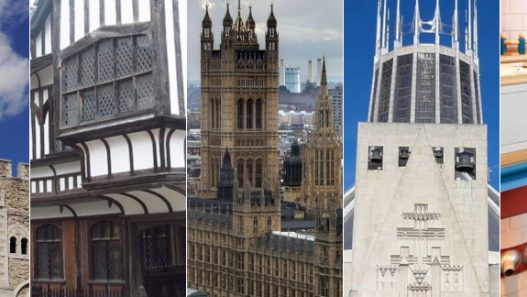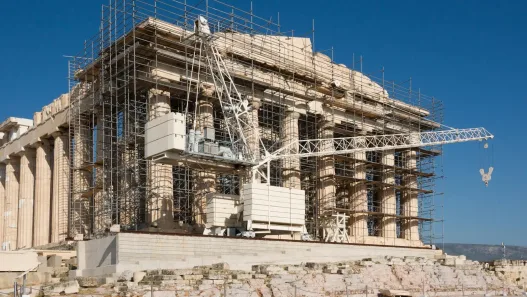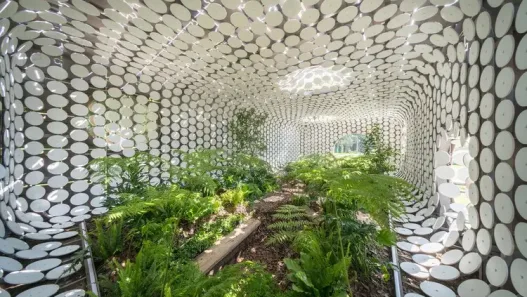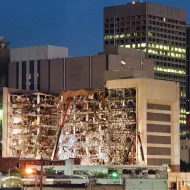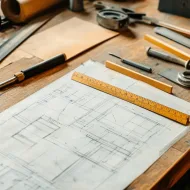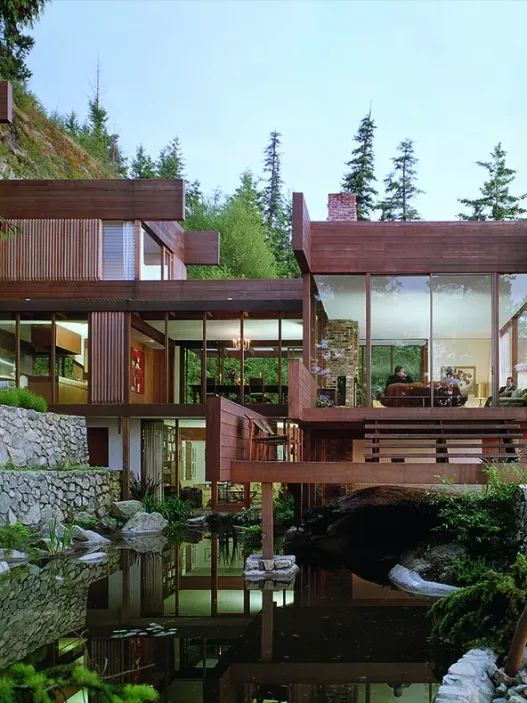Salt Lake City Winter Olympics, urban design and architecture by pointing to a very important moment in the evolution of innovation and acted as a platform for transformation. This global event you only have to showcase your athletic abilities at the same time, stressed the importance of sustainable development and infrastructure planning in cities.

Historical Context
Winter Olympics-Salt Lake City, September 11, 2001following the tragic events in recovery and endurance was held on the floor. First in 1995 in Salt Lake CityGames given to eat, especially important after a corruption scandal involving review of Olympic officials and the difficulties encountered. This turbulent period, integrity, community involvement, and the creation of a safe environment for both athletes and spectators again meant that I had to focus on the issues. The historical context of the games, transparency, accessibility and sustainability urban planning and architectural design gives priority to that laid the groundwork for innovative approaches.
The Importance Of The Event
Just as a showcase of the Winter Olympics, winter sports, but also Salt Lake Cityalso as a catalyst for Urban Development was important. Tourism and economic growth boosted international interest in this event by the city. More importantly, it provided an opportunity to rethink how urban areas can be designed and used. The games, intended to have a lasting impact beyond the temporary excitement of the Olympics sports fields, transportation, urban experience and social fields stressed the need for integrating compatible. This change in perspective cities around the world, large events are encouraged to think that he can promote sustainable practices and how to urban renewal.
Basic Architecture Goals
The goals surrounding the Salt Lake City Games, architectural, functional, eco-friendly and revolved around creating aesthetically pleasing spaces. Only to serve the needs of planners and architects not only the Olympics, but also to design spaces that will provide lasting benefits to the society they intended to. For example the Olympic Park in Salt Lake City, designed with sustainability in mind, and energy-efficient buildings after the games, can be reused for plants that contained the use of the community. Multi-purpose fields, with the emphasis on creating both immediate and long-term highlighted a growing trend in architecture that aims to serve the needs of the community.
The Challenges Of Urban Planning
Despite the excitement surrounding the Games, city planners has faced numerous challenges. One of the biggest obstacles, was to provide adequate transportation infrastructure to meet the influx of visitors while minimizing environmental impact. Salt Lake City, and places for easy access to the light rail network connecting the participants, including the expansion of public transport systems had to be developed. In addition, when developing new facilities planners, protecting the delicate balance of the natural landscape of the city had to take care of. Entries for local communities to interact with and address concerns into the planning process to incorporate was very important, but often was complicated.
Salt Lake City Winter Olympics, Urban Development and marked a significant moment in terms of architectural innovation. This is not only a celebration of athletic prowess, but also of cities, large-scale activities to integrate into the urban fabric was an opportunity for me to imagine how they re. Olympic venues, sustainable design, community participation and visionary infrastructure became symbols by displaying this transformation. As you explore featured in architectural structures, these structures after the games end and we find out how society is affecting urban landscapes.
Prominent Architectural Features Of The Olympic Venues
Rice-Eccles Stadium
Rice-Eccles Stadium, stands as an indicator of modern design and functionality. First in 1995 the stadium was built for the Olympics, a stunning semi-transparent roof has undergone significant renovations, such as addition and the improvement of the seating. The design not only aesthetic appeal but also contains elements that increase energy efficiency and sustainability are emphasized. The Wasatch Mountains aresituated against the backdrop of the stadium, with a blend of natural beauty and human creativity.
Rice-Eccles, beyond to host the opening and closing ceremonies, social events and sporting activities has become a centre for a lot of games then. This transformation of the Olympic venues that can be transformed into a public space by promoting local involvement and pride shows how vital. The heritage continues to inspire architects and urban planners of the stadium to serve more than one function and a flexible, adaptable space emphasizes the importance of.
Utah Olympic Park
Utah Olympic Park showcases the spirit of adventure and innovation. Designed as a training area for winter sports in the Park, ski jumping, luge and offers various facilities of the track for athletes. International architectural design competition in an environment that mimics the conditions of the functionality of highlighting allows you to train athletes. The design of the park to be integrated into natural landscape, man-made structures by creating a seamless link between the surrounding environment increases the attractiveness of the park.
The park attracts visitors for both winter and summer activities, outdoor recreation area has been transformed into throughout the year. The park, the Olympic area, and how tourism can promote healthy lifestyles within the community to imagine how is the best example of what can. Stability in terms of sustainability, while providing a space for athletic excellence is evident in the activities of the park that gives priority to environmental management.
The Olympic Cauldron Salt Lake City
Salt Lake City, the Olympic cauldron for the Games is more than a symbol; represents the spirit of the Olympics. Standing tall on the horizon boiler, is an architectural masterpiece that captures the essence of competition and coexistence. An iconic building that is both functional and well designed as the boiler, Utahin cultural identity and reflect the values of the Olympic movement.
Win this, and continues to be a focal point for celebrations and gatherings symbolizes hope and inspiration for both athletes and spectators. The presence in the city, invites you to reflect upon the importance of community spirit and the legacy of the Olympics. Similar structures around the world influenced the design of the boiler, and has emphasized the role of monumental architecture on the creation of lasting memories and connections.
Medals Square
Located in the heart of downtown Salt Lake Medal Plaza has served as the field is performed during the Olympics medal ceremony. Design an open space where the audience can gather to witness the accomplishments of the athletes by providing promotes a sense of community and celebration. Plaza, Utahstunning sculptures and landscaping regulations that reflect the cultural heritage in cercevelener to vibrant urban environment.
After the Olympics, the Medal Plaza events, festivals, and continued to be a popular meeting point for daily activities. This versatility, while encouraging social interaction of public space that shows how they can be designed to accommodate the needs of the community. The medal plazawith the ongoing popularity of urban public art that promotes a sense of belonging among residents, and highlights the importance of inclusion in the urban planning of the assembly area.
Transportation Infrastructure
The Winter Olympics has led to significant improvements in the transportation infrastructure. Salt Lake City, to handle the influx of visitors to the improvement of public transport, including the development of a light rail system and bus services has invested to expand the system. These improvements will not only facilitate access to the Olympic venues, it also laid the foundations of a more sustainable urban transport network.
Salt Lake City’s transportation systemshave become an integral part of daily life since the legacy of this investment is seen clearly today. The emphasis on a cleaner environment by reducing dependence on cars and public transport have contributed to lower emissions. This shift towards sustainable transport options, large-scale events that host has set a precedent for other cities and careful planning of urban mobility and long-term benefits in terms of livability has shown that it can provide.
As a result, the Salt Lake City Winter Olympics has left an indelible mark on the city’s architectural landscape and urban planning. Games developed for the spaces and infrastructure, serve as examples of persistent innovation and community involvement. As cities continue to evolve, the lessons learnt from this Olympic experience may guide future projects, and urban areas of lively, accessible, and may be reflective of the communities they serve.
Utahthe Winter Olympics held in Salt Lake City where she exhibited athletic prowess ta didn’t become just a spectacular show; at the same time was significant for Sustainable Urban Development a case study. These games are large-scale events that has led to rethinking of the city and their surroundings can affect how you are. The legacy of this activity, environmental friendliness and sustainability influenced by highlighting future urban planning and design. As you explore the fundamental aspects of this innovative approach, we’ll see that continue to resonate in today’s urban landscape of the courses.
Sustainable Design Practices
Sustainable design applications, Salt Lake City emerged as a guiding principle during the planning and execution of the Winter Olympics. The goal is to create spaces just for the sport, and makes a positive contribution to the environment was to ensure that not every construction and service. This thought, every decision, and the community are taken into account the long-term effects on the planet where a holistic approach is encouraged. Responsible for the event by opening up to a wider debate about urban planning and building practices, encouraged other cities to adopt similar strategies.
Environmental Impact Assessments
One of the cornerstones of Sustainable Design, Environmental Impact Assessment (EIA). For the Olympics, comprehensive evaluations reviewed prior to any construction. This process proposed development of local ecosystems, air quality, will affect water resources and to analyze how contained therein. The results of these evaluations, by preserving the natural landscape as much as possible informed decisions about site selection and design changes. Salt Lake City, has set a precedent for future mega-events by giving priority to environmental issues, ecological health and the physical health of urban development that is needed and indicated.
The Use Of Local Materials
During the Olympics has been a hallmark of the use of local materials construction practices. Shipping materials obtained from the organizers and local economies are supported by both reduce emissions in the immediate area. This approach to the building, the connection between landscape and community is strengthened. For example, materials such as timber have been used in many buildings and local granite, and this has been helping create a sense of place and authenticity. This application at the same time be in harmony with the surrounding environment, buildings and Utahhas ensured that reflect the unique character of the natural environment.
Energy Efficiency Initiatives
Energy efficiency has been a key focus during the Olympics. Attempts to minimize energy consumption across various spaces and facilities were. For example, many buildings designed in consideration of natural ventilation and daylight, and this has reduced the dependence on artificial heating and lighting. Additionally, renewable energy sources such as solar panels are integrated into the design of many of the Olympic venues. These strategies not only to reduce the carbon footprint during the games, but they are also energy-conscious architecture by creating a standard for future developments in urban design has encouraged the transition to greener practices.
Water Conservation Strategies
The Winter Olympics has played a critical role in the planning of water conservation strategies. Utahwho are aware of the arid climate in planners have incorporated systems to maximize efficiency and minimize the use of water. This toilets, low-flow fixtures and are designed to minimize waste and have included the establishment of irrigation systems. Additionally, the location surrounding landscape of drought-tolerant plants were used; this is both water savings and less maintenance required. A commitment to this protection, especially in areas where water shortage is a concern emergency, has emphasized the importance of sustainable water management in urban design.
After The Games, Sustainability Studies
The legacy of the Winter Olympics in Salt Lake City after the game extends beyond the activity by focusing a powerful way to sustainability efforts. Planners, for the use of spaces after the games end the majority of the community has allowed us to redesign. For example, as has become a residential area of the Olympic Village, various sports facilities have been converted into a community center. This prediction was such a large-scale activities that should be felt by the community for many years by emphasizing the benefits of long-term Urban has demonstrated its commitment to sustainability. Salt Lake City, by giving priority to community participation and sustainability of ongoing, future events and created a model for the global meetings of the excitement of the needs of the local population has shown that you can start with.
As a result, the Salt Lake City Winter Olympicslessons learned from offers invaluable information on Sustainable Urban Development. Innovative design practices assessments and careful dedication to the welfare of the community, this event is a large scale has redefined what it means to host the meeting in a responsible manner. While the environmental problems of cities around the world continue to struggle with during these games is specified policies in the field of urban planning and sustainability continues to be a guiding light for future endeavors.
Salt Lake City Winter Olympics, large-scale events that could reshape cities and Urban Development by showing how the landscape stands as an important moment in. This event is just as exciting competitions not to introduce, at the same time, Salt Lake Cityand has transformed the urban fabric of community participation, public space design, and left a legacy that will continue to influence economic growth. By examining the various dimensions of this transformation, we can learn valuable lessons for future urban development.
Social participation and influence
One of the most remarkable aspects of the Salt Lake City Winter Olympics was the importance of community participation. From games to various stakeholder groups, local businesses, the event brought together to develop a vision for the neighborhood associations. This collaborative approach by allowing the voices of the residents of the region to be heard about the event encouraged a sense of pride and ownership.
Local stakeholders were actively involved in planning and decision making. This is only a top-down approach was not; citizens were encouraged to participate in discussions on how the Olympics will affect their neighborhoods. Such participation, created an atmosphere of inclusiveness, the feeling that an individual contribution is valued. This participatory model, the hosting of major events since then, other cities, by accepting that the participation of the citizens is very important for Sustainable Urban Development, has provided inspiration to give a high priority to contribute to society.
The Participation Of Local Stakeholders
Only with the involvement of local stakeholders has passed beyond the consultation. Various community groups, The Salt Lake City eventto ensure that reflects the unique character of city planners and organizers worked with the Olympic. Workshops and public forums, by providing the opportunity for city residents to express their ideas and concerns brought in a more specific approach to urban planning.
For example, the design of the venues and infrastructure, have been affected to a great extent from the community’s feedback, and to be compatible with local needs and the aesthetics of new developments is provided. This collaborative spirit, it will not only increase the functionality of the Olympic venue, but also provided a framework for future urban projects. Cities, by giving priority to the local residents for entry and can improve overall quality of life, develop a sense of belonging.
Public space and accessibility
The Olympics, Salt Lake Cityhave prompted a reassessment of the public space. The event has been a catalyst for the creation of more accessible and a warm environment. Improved public transport routes, improved pedestrian paths, parks and recreation areas, there have been direct results of the development of the Olympic planning process.
Especially important was the focus on accessibility. Spaces accessible to individuals with disabilities while providing comfort in the heart of the effort in order to accommodate large crowds of public space was shown. Designing a public space of a lasting effect on the format of this commitment on inclusiveness and accessibility in cities around the world have encouraged to give priority to urban planning.
Economic benefits for the community
In Salt Lake City to host the Winter Olympicsbrought a huge economic mobility eat. The influx of visitors, hotels and restaurants, shops and entertainment venues as opportunities for local businesses, has created. The increase in this budget is only a short term gain, it wasn’t; the event Salt Lake Cityhas catalyzed the growth of the global map Yi putting long-term.
During the Olympics, investments in infrastructure are also provided economic returns. Improved transportation systems and urban residents in the city and tourists alike to navigate, making it easy for the local economy strengthened. Improved facilities and services by attracting new residents and businesses that are contributing to a vibrant economic environment, the legacy of the Games continues to be felt.
Cultural celebrations and events
It was much more than a series of sports competitions and the Olympics; it was the celebration of culture and community. Various cultural events that accompany the Salt Lake City Games, performances and exhibitions that showcased through their rich heritage. These celebrations has promoted a sense of unity by bringing together different communities highlighted and local traditions.
This cultural interaction was vital in creating the atmosphere of excitement and pride. The city’s cultural programs to continue the legacy of these events by encouraging the spirit of the celebration allowed to continue after the end of the games. Other cities also increase the social cohesion and cultural activities by acknowledging that this approach can contribute to the identity of a vibrant city could learn from.
Long-Term Social Effects
The Winter Olympics of long-term social impact has been very deep. Salt Lake City event justdid he transform the physical landscape, at the same time, strengthened social ties between urban residents. During the preparations and celebrations, encouraged a sense of community, prepared the ground for ongoing civic engagement.
The Olympics in the years that followed, residents continued to participate in local government and community initiatives. Participation in the spirit of this permanent, large-scale events is a testament to the power in shaping social dynamics. Cities, by giving priority to social participation and inclusion, can create environments where residents can feel powerful in contributing to the neighborhood.
As a result, the Salt Lake City Winter Olympicsoffers invaluable information on lessons learnt from Urban Development. Community involvement, accessibility, economic growth, cultural celebration, and long-term social impact, highlighting the cities, beyond the duration of any activity that can create thriving vibrant urban landscapes. These policies may guide future urban initiatives, and development of not only the structure but also with people who live in these areas can be related to.
Salt Lake City Winter Olympics, it was much more than a showcase to exhibit your athletic abilities; marked an important moment in terms of architectural innovation and Urban Development. Games, the cities, their infrastructure both functionality and aesthetic appeal to enhance their environment and how design can be an opportunity to rethink presented. In this research, by examining the architectural developments that promote the Olympics, as both local and global reveals how urban landscapes shape of these innovations.
Architectural innovations and technologies
The Winter Olympics, efficiency, sustainability and modern design has been a catalyst for innovations and technologies that reflect the needs of various architectural. The event, architects and planners, buildings and public spaces, not only games, but also can be built in a way to support the needs of the community long-term creative thinking about how you got it.
Use Of Advanced Building Materials
During the Olympics, one of the major features of the landscape was the use of advanced construction materials architectural. These materials beyond the traditional brick and mortar, designed for improved performance and sustainability elements. For example, did not help with the structural integrity of concrete and glass, use only high-strength, at the same time includes stunning visual elements. Both functional and visually fascinating buildings such as the Olympic Stadium in Salt Lake City has shown innovative facades. This approach did not contribute to the aesthetic quality of the structure not only for materials but also has helped to increase energy efficiency and reduce maintenance costs.
Smart Technology Integration
As the world become more connected to each other, the integration of smart technology into the architectural design has become increasingly important. The Salt Lake City Olympics and the athletes by incorporating technologies that improve the overall experience for both the audience has embraced this change. The advent of intelligent lighting systems to reduce energy consumption and increase the visibility of operations and ticketing management system to facilitate advanced and applied it to the crowd. More such innovations creating a pleasant atmosphere during games only, but also the urban development of technology and can improve public safety by showing how it has set a precedent for future events.
With A Twist Of Structures For Re-Use
Another important lesson was the importance of adaptive reuse in architecture from the Olympics. Instead of demolishing existing structures, most of the sites after the games end re-designed to be used. This is only the preservation of historic buildings not only that but also reflected a growing awareness about sustainability in urban planning. For example, a residential area of the former Olympic village converted into much-needed housing while preserving the original character of the buildings is provided. This adaptive re-use application, they can hold their head high for the past and the future of cities in innovation fields suggests that they could create both functional and meaningful.
Design for Climate Resilience
Climate resilience, emerged as a critical theme in the architectural planning for the Olympics. With increasing awareness about environmental issues, designers, they worked to create buildings that can withstand extreme weather conditions and areas. This prediction, and the usage of renewable energy sources such as solar panels to reduce energy consumption in the structures of natural ventilation systems is utilized. Salt Lake City, have created a benchmark for future developments of Urban Climate Resistance by giving priority to emergency purposes only and not only serve, but also has emphasized the need for buildings that are sustainable in the long term.
Emerging Architectural Trends In Games
Winter Olympicsemerging architectural trends have had a lasting impact on urban design. The event hosts various activities that highlighted the importance of creating multifunctional areas has encouraged a mix of uses in neighborhoods. This tendency a lot to make it work, residential, commercial and recreational areas has led to the creation of vibrant urban environment where coexist in a harmonious way. In addition, the emphasis on sustainability and durability, architects and planners around the world adopt green building practices and innovative technologies to incorporate into the design of affect and has encouraged them.
As a result, the Salt Lake City Winter Olympics, it was a very important moment for architectural innovation, and today it continues to shape the urban landscape that provided valuable lessons. Games, the use of Advanced Materials, and smart technology integration, adaptive re-use and climate resilience through the emergence of new trends for future developments, a source of inspiration, has encouraged a spirit of creativity and sustainability. Cities trying to overcome the challenges of modern life, the legacy of the Olympics Salt Lake City continues to be a guiding light in the pursuit of innovative urban landscape.
Salt Lake City Winter Olympics, it wasn’t just a sporting event; it was a transformative moment for Urban Development and planning in the region. Cities around the world from large-scale events they want to host, as Salt Lake Cityfrom the lessons learnt provides invaluable information. These courses, urban planning, community participation, sustainability, and economic impacts and future activities of the various aspects of mentioning how can you improve the urban landscape, and how it is shaping the local communities that can benefit from.
Lessons learnt for future activities
To host an event like the Winter Olympics requires meticulous planning and implementation. Salt Lake Citylessons from urban development emphasizes the importance of vision. Planners, infrastructure improvements have learned that you can create lasting benefits for the city with the efficiency requirements of the integration. From this experience, every decision that is taken at the planning stage, have the potential to affect the city after the end of the event emphasized. Future events, benefits in order to move beyond the spotlight of the games, can benefit from this course.
Best Practices In Urban Planning
Salt Lake Cityfor the Olympics in urban planning, city officials, planners, and was a comprehensive effort that includes collaboration between community members. One of the key applications only to serve not only the activities, but also of the city’s residents was the development of a transport system that also improve the daily transportation. After the commissioning of improved bus services and light rail, in the city made it easier for people to navigate. The focus on accessibility and connectivity is the best application for future activities, and provides for infrastructure improvements to be useful for both visitors and local people.
Also, the locations to be placed strategically throughout the region, it is possible to minimize congestion and better distribution of resources. By giving priority to existing plants and landscape planners were able to create more integrated, urban neighborhood. Future events, instead of building new spaces and isolated, they may adopt similar practices by emphasizing the use of existing resources.
The Importance Of Legacy Planning
Heritage planning has emerged as an important theme during and after the Salt Lake City Olympics. This concept of games developed for the facilities and infrastructure in the long term will continue to serve the society believed that it involves. For example, many Olympic venues, sports facilities, such as recreation areas for communal use and has been redesigned. This approach is not only to maximise investment, but also encourages a sense of ownership among residents of the region.
The organizers of the event should give priority to future planning inheritance from the beginning. Planners and community stakeholders by evaluating their needs by interacting with the developed facilities, can have a lasting impact. This commitment to Heritage, temporary and permanent venues to enrich the urban environment that improves the quality of life of residents can convert your assets.
Strategies for community participation
The Salt Lake City Olympicswas one of the cornerstones of the planning process of community participation. The participation of local residents and stakeholders, the activity of the community has helped shaped to reflect the needs and values. Public forums, surveys, and workshops, by allowing different voices to contribute to the planning process has encouraged a sense of inclusiveness.
Going forward, should give priority to community participation as a fundamental aspect of planning future events. Collect valuable insights and a sense of belonging by creating platforms for dialogue organizers can develop. This collaborative approach not only does not develop the activity itself, but also to give value to the community by creating trust between the organizers and the local perspective and allows to be integrated into the planning process.
Integrating Design Sustainability
Sustainability was a major focus during the Salt Lake City Winter Olympics, and they tried to minimize the environmental impact of the event planners. This stability, energy efficiency and the use of sustainable materials, emphasizing the design of the venues and infrastructure has been reflected in. For example, in many buildings, solar panels and energy-efficient systems like Yesil technologies used.
Future events can build on these principles by taking a holistic approach to sustainability. This includes not only the construction of venues, but also the planning of transportation systems, waste management strategies, and community engagement practices that prioritize environmental responsibility. By incorporating sustainability into every aspect of event planning, cities can create a positive impact that resonates far beyond the event itself.
Assessing Post-Event Economic Impacts
The economic impacts of hosting the Winter Olympics have been the subject of extensive analysis in Salt Lake City. While the immediate influx of visitors and spending provided a boost to the local economy, the long-term impacts required careful consideration. Planners assessed job creation, tourism growth and infrastructure improvements to understand the event’s lasting economic footprint.
A comprehensive evaluation framework is essential for future events. This should include not only the direct economic impacts, but also the social and environmental impacts of hosting such a large-scale event. By taking a holistic view of economic impacts, cities can make informed decisions that benefit society and lay the groundwork for sustainable growth.
In conclusion, the lessons learned from the Salt Lake City Winter Olympics provide a roadmap for future urban events. By focusing on best practices in urban planning, emphasizing heritage, promoting community engagement, integrating sustainability, and assessing economic impacts, cities can create dynamic urban landscapes that thrive long after the games have ended. These insights will guide planners, policymakers and communities as they prepare for the next generation of transformative events.



